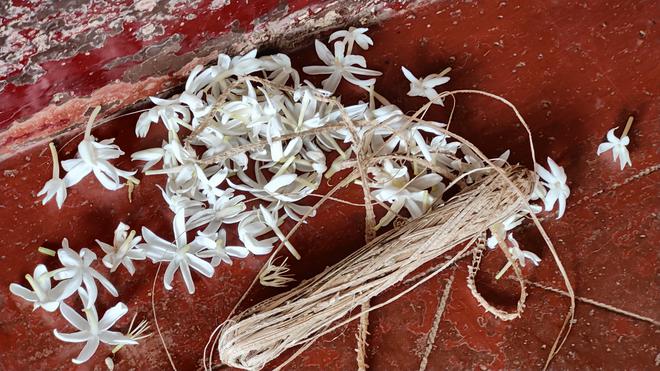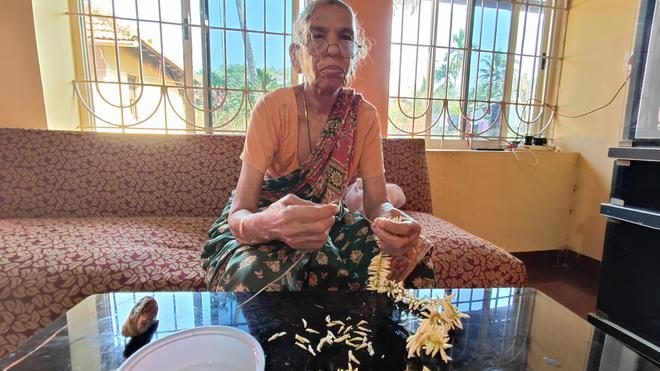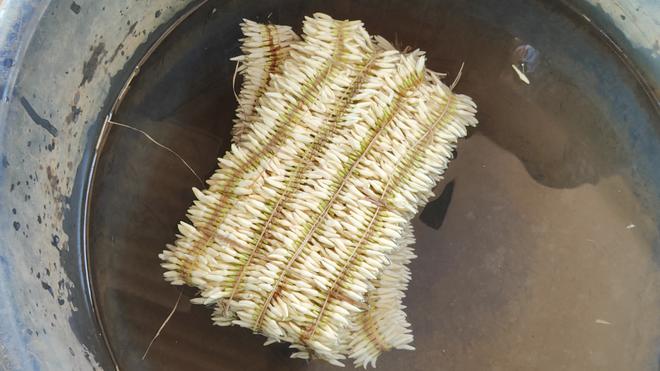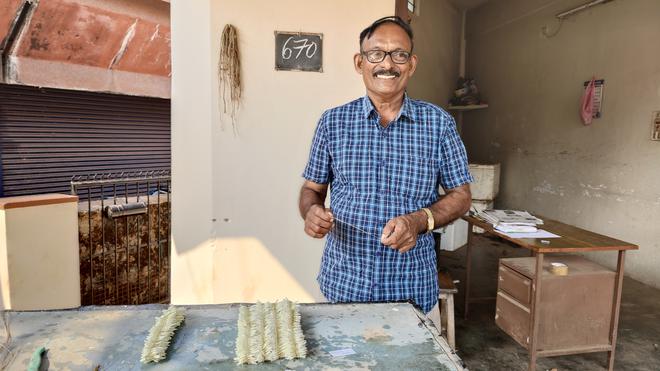It has been a long and tiring day for Naveen, 30, who has just finished loading the last of his flower parcels for the day — the famous Udupi mallige (jasmine) — on a Bengaluru-bound bus. “This season has not been particularly profitable as we have had poor rains and it has been unusually hot,” says Naveen, from Brahmavara taluk in Karnataka’s Udupi district. This is perfect weather for this variety of jasmine. But it also means a larger-than-usual supply of flowers, and a dip in their rates.
The flowers usually fetch around ₹2,000 per atte (a bunch of over 3,000 buds) during this time. But the Udupi Mallige app, developed in 2019, will tell you that the average rate since the last week of August has been hovering around just ₹550-₹600.

The sentiment is echoed by another flower seller, Vishak of Udupi, although he is hopeful that the rates may spike closer to the upcoming Ganesh Chaturthi festival. “It has been quite a dull time for flower dealers. We have had the odd good day in the recent past, but we hope that the high demand during the current wedding season and the upcoming festival will bring the rate up to ₹2,000,” he says.
ALSO READ | Marketing of Udupi Mallige to get a push
Priestly origins
The Udupi mallige is widely grown in the village of Shankarpura in Udupi. As I enter the bylanes, I notice that most houses have large gardens. Just as I pause to admire the plants outside one of the houses, an affable-looking Wilson Martis invites me in.

The subtle fragrance of this delicate flower is unmissable in his living room as his 80-year-old mother, Stella Martis, strings the delicate buds into a garland locally known as a chendu. I watch in awe as she deftly moves her frail fingers, artistically tying the milky white buds with fibre extracted from the stem of the banana plant, specifically of the elaichi/yelakki variety. Martis says that each chendu has about 800 buds and stringing them together is an onerous task, just like the picking of the buds, which he does at dawn.
The history of the cultivation of the Udupi mallige in Shankarpura, home to a large Christian community, is interesting. This crop, accorded a GI tag, has been cultivated here since the mid-1930s. “The origin of jasmine cultivation here can be traced to Fr. Basil Salvadore Peris, who was appointed as the parish priest in 1934, says 76-year-old John P. Mendonca, a resident. “The region, largely hilly with laterite soil unsuitable for paddy cultivation, was ridden with poverty. Fr. Peris had the intuition that jasmine, which was grown at that time in Bhatkal in Uttara Kannada district, would thrive here. He arranged for saplings to be brought to Shankarpura. My grandfather, along with a couple of his close friends, travelled on foot to Bhatkal, almost 100 km away. Each of them came back with 20-25 saplings which they distributed among the community.”

Fair and prompt payment
The flowers are highly sought after in most Hindu temples of the region and also for festivals and weddings. The cost of an atte (one atte is four chendus) varies from ₹100 to almost ₹2,200 depending on the season. “We have an extremely efficient and transparent system of procurement, distribution and marketing where local agents collect the flowers from our doorstep and pay us fairly and promptly,” says Ramakrishna Sharma Bantakal, 60, who owns a nursery.
The system Sharma refers to is the concept of the mallige katte or a jasmine trading centre, where agents meet after collecting the flowers from house to house. It was started in 1940; John P. Mendonca’s father, Pascal Mendonca, was one of the founding merchants of the katte. Denzel Castellino, an agent in Shankarpura, says there are about 800-1,000 houses in the village where almost 90% grow at least 10-20 plants. The Udupi Mallige app tracks prices and helps connect growers, sellers and buyers of this flower that is sent to Mangaluru, Bengaluru, Mumbai and even Dubai.

Dwindling hands
An intrinsic part of local life and culture, Udupi mallige has been a major source of income for the people of Shankarpura for several decades. “People lived in joint families, where even children helped in picking the flowers. But now the scenario is different; families are migrating abroad. During the peak season, extra hands are needed to pick and string the flowers which is tough to find today,” says Mendonca.
“We had 100-150 plants during my father’s time, and I just have about 25 plants now as maintaining them is an arduous task. The plants are prone to pest attacks and the soil needs to be replenished regularly. Organic manure is tough and expensive to procure while chemical fertilizers are harmful to health,” rues Martis, in his 50s.
Moreover, the task of picking and stringing is time-bound. “The flowers need to be picked in the bud stage and strung by about 11 a.m. Once the rate is fixed, we need to make proper arrangements to ensure they remain fresh while we send them to places far away,” says Vincent Rodriguez, a cultivator and agent in his 60s.

Despite the challenges, however, Udupi mallige continues to be cultivated by Shankarpura residents; it is after all a time-honoured tradition and a treasured commodity.
“It is integral to our culture and we will continue to grow this unique crop that we value immensely. The plant is now being cultivated in other regions such as Mangaluru and Puttur, which will help meet the demand. As long as there is demand from temples and festive occasions, Udupi mallige will continue to spread its fragrance,” concludes Mendonca.
The freelance writer from Bengaluru has a passion for travel, culture, food and design.







